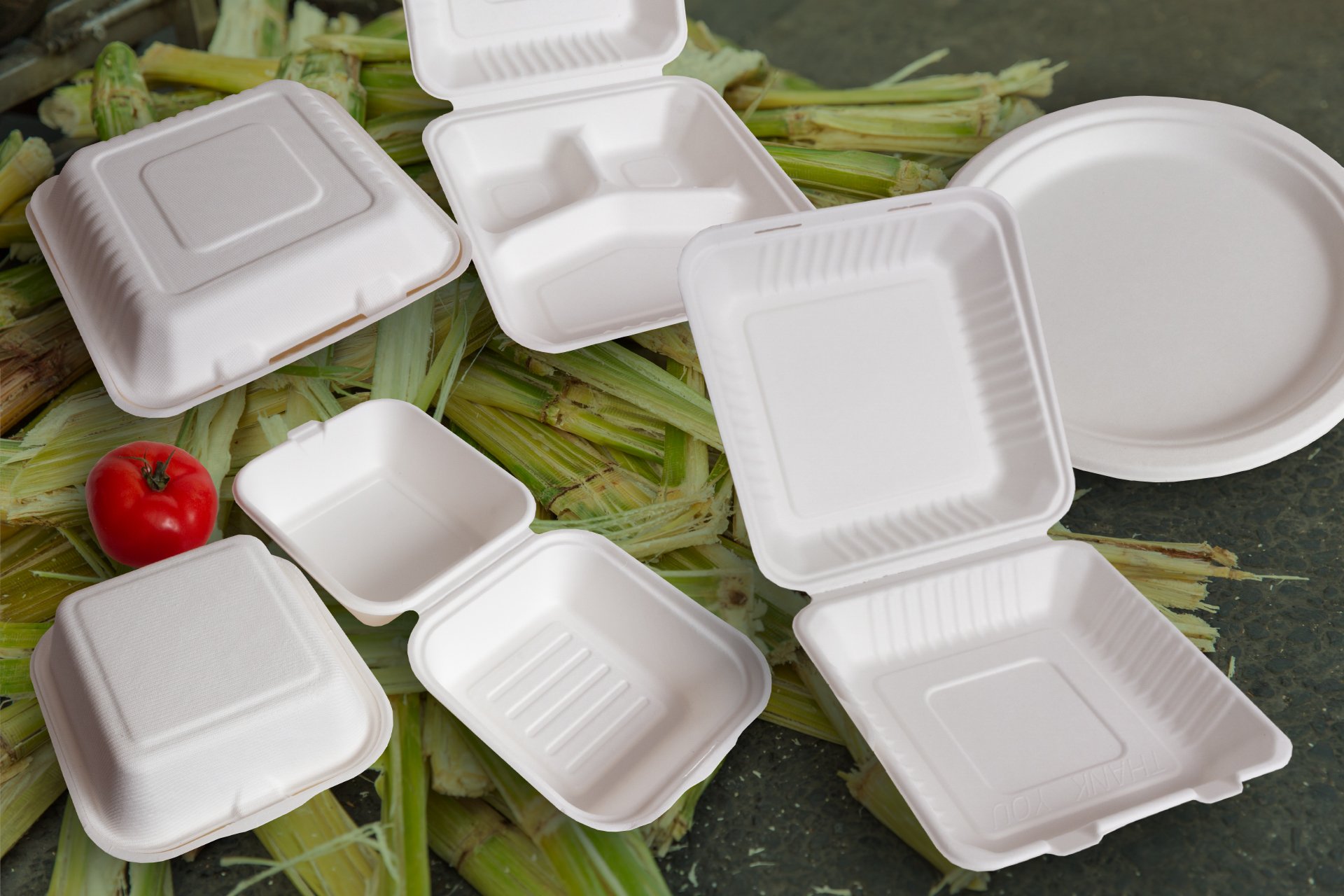
Sustainability
Eco-Friendly Sugarcane Fiber Packaging
Better for the environment.
Sugarcane fiber is also called Bagasse. Its the fibrous part of a sugarcane stalk that is left over after extracting the juice. Transforming sugarcane stalks into products gives them a new life as raw materials. This material is considered an extremely renewable resource because it uses a non-edible by product of a food production.
How sugarcane fiber is produced.
Sugarcane production starts by extracting all the juices from the sugarcane stalks. Only
the bagasse fibers are left after the extraction. The fibers are then blended with
water. This creates a pulp with a consistency similar to wood pulp. Pressure and
heat is added to transform and mold the pulp into a variety of products.
Our Environmental Mission
BCR-3 began in 2021. Andy Ferrell, the founder of BCR-3, transitioned from the Waste and Recycling Hauling Industry of 30 years with extensive knowledge of Landfills and how they process their waste.
With this knowledge we found the need for the distribution of Sugarcane Fiber Packaging because of its benefits to our environment! Our goal is to help consumers be more Informed, more aware and more educated about our Biodegradable, Compostable and Recyclable Products: Sugarcane Fiber Packaging.
Thus......BCR-3 was created!
Environmental Benefits
Sugarcane Fiber provides an alternative to Plastics and Styrofoam.
Eco-friendly materials possess three characteristics and Sugarcane Fiber is all three: Biodegradable, Compostable and Recyclable.
Around 1.2 billion tons of Sugarcane are produced annually. From this 100 million tons of Bagasse are created every year.
Bagasse Packaging production finds a new purpose for this byproduct that otherwise would have been disposed of or burned.
Biodegradability means that a product can break down on its own over time. Sugarcane Fiber can biodegrade in as little as 60 days.
When composted Bagasse turns into a "Nutrient-Rich " fertilizer.




